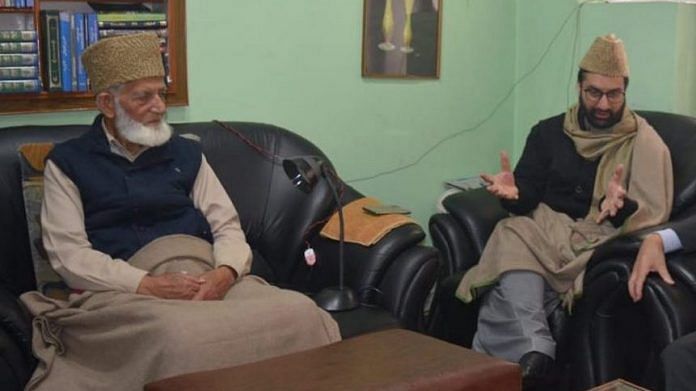Modi govt felt it was ‘time to open up to the outside world’, in the hope that the high-profile visitors would help in changing the narrative on Kashmir.
New Delhi: The Narendra Modi government has decided to open up Jammu & Kashmir to foreign leaders, ambassadors accredited to the government of India, as well as other influential people in the hope that the visitors will see “that the situation is not as bad as it is made out to be in the media”.
The visit to Srinagar last week by the former prime minister of Norway, Kjell Magne Bondevik, is believed to have had the blessings of National Security Advisor Ajit Doval.
Bondevik met Hurriyat leaders Syed Ali Shah Geelani and Mirwaiz Umar Farooq, with the visit being brokered by Sri Sri Ravi Shankar’s Art of Living.
An Art of Living source, who spoke on the condition of anonymity, told ThePrint that the humanitarian mandate of the organisation means that its leaders reach out to people in conflict zones, of which Kashmir is one.
The meeting between Bondevik and the Hurriyat, at which an Art of Living representative was present, is a huge change in the Modi government’s mindset — for the last several months, it has been trying to forge a government in the state which would be mentored by the BJP.
On the one hand, BJP national general secretary Ram Madhav pushed People’s Conference leader Sajad Lone to form a government. On the other, the government felt it was “time to open up to the outside world”, in the hope that the visitors would at least somewhat help in changing the narrative.
Also read: Ex-governors, including a Vajpayee appointee, question J&K assembly dissolution
Change of heart and head
In an election year, just as Modi hopes to take credit for opening up the Kartarpur Sahib corridor to Pakistan, a change of both heart and head vis-à-vis Kashmir seems to have taken place in Delhi.
For the first time, there is some acknowledgement that the Kashmir problem cannot be solved just by “killing 400 young men in south Kashmir”, a figure which BJP leaders have often cited in their defence of the muscular approach it adopted in government.
The permission for the ex-Norwegian prime minister to visit Kashmiri separatist leaders and, within a few days, fly to Pakistan-occupied Kashmir and visit leaders across the Line of Control is nothing short of extraordinary.
Farooq Abdullah, former chief minister of J&K, told ThePrint that the government gave permission for Bondevik to meet the Hurriyat because “they don’t know what to do”.
Also read: J&K elections could be held beyond 6-month period, like Anantnag bypoll
What led to the change
The UN Human Rights Commission wrote an extremely critical report of the situation in Kashmir in the summer, casting a shadow on India’s democratic credentials.
Then, when India’s high commissioner to Pakistan Ajay Bisaria and a few other diplomats visited Kashmir in the summer, they felt that it might be a good idea to open it up and allow its people to breathe a bit.
So, when the Norwegians came calling, riding on the self-belief of successfully brokering conflict negotiations, Delhi decided to quietly say yes. Doval was said to be instrumental in this decision.
Norway’s Erik Solheim was involved in Sri Lanka for years, hoping to broker an end to the conflict between the Tamils and the Sinhala government. But when the end came, it was India which held its nose, allowing former president Mahinda Rajapaksa to finish the decimation of the LTTE, while Indian naval boats secured the waters off Jaffna so as to prevent ex-LTTE chief Prabhakaran from escaping.
It is nobody’s case that one meeting by an Art of Living representative amounts to “brokering” a tangled matter for decades. But just like the Kartarpur Sahib corridor example showed, one thing led to another, and on the tenth anniversary of the Mumbai attacks, the Modi government went back on its own order.







The acknowledgement that things are not going well, the humility to accept external help are both praiseworthy.